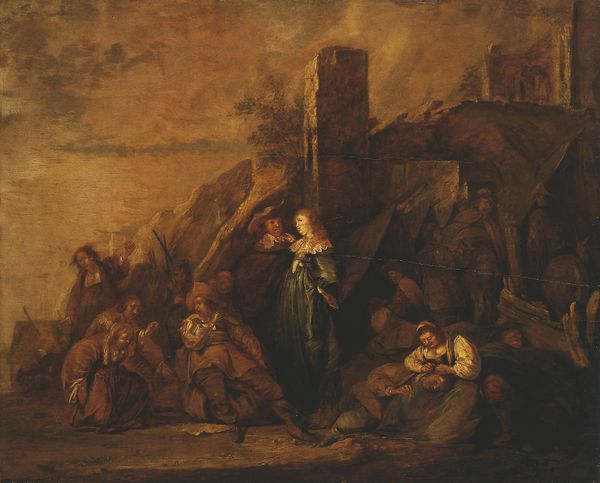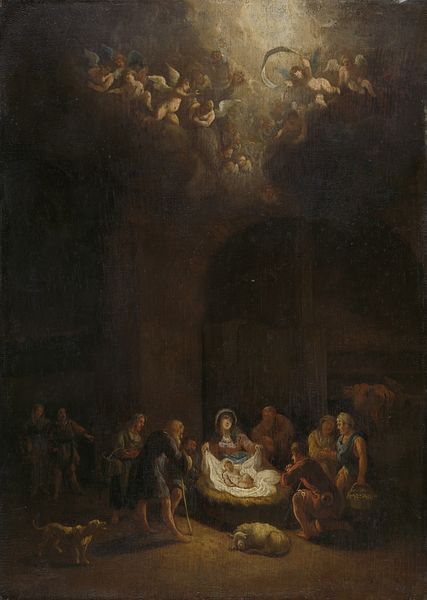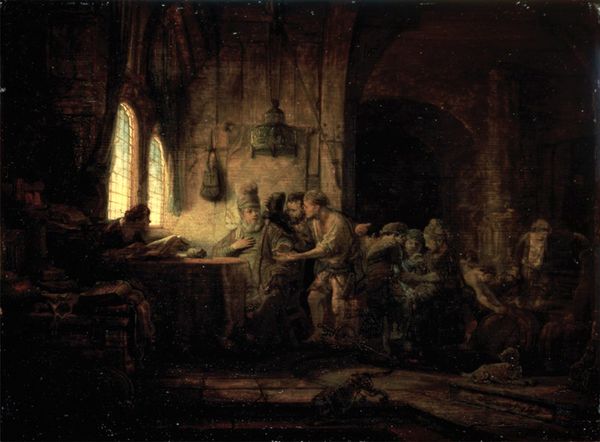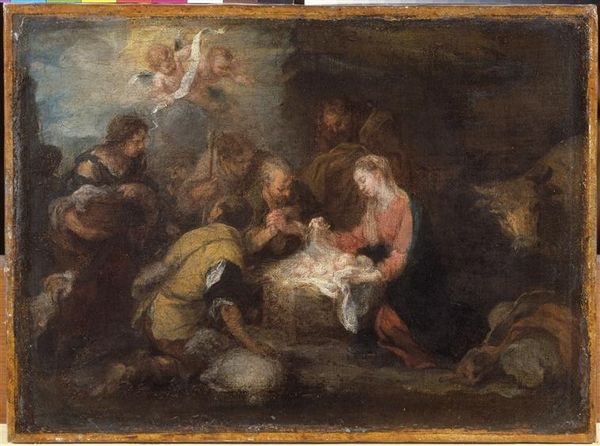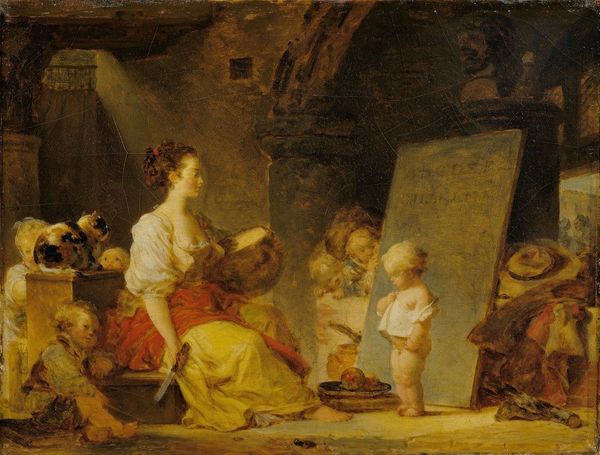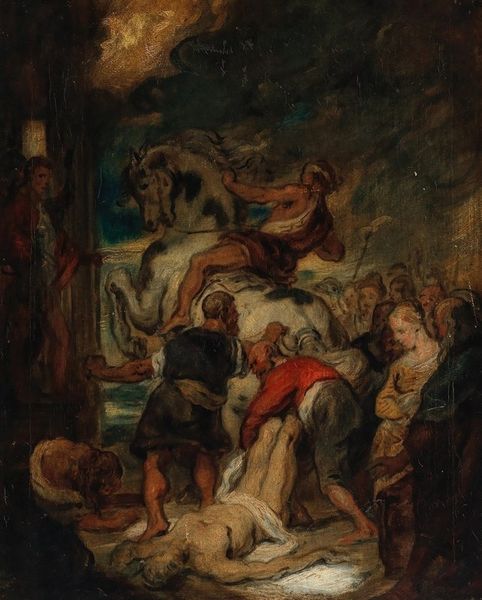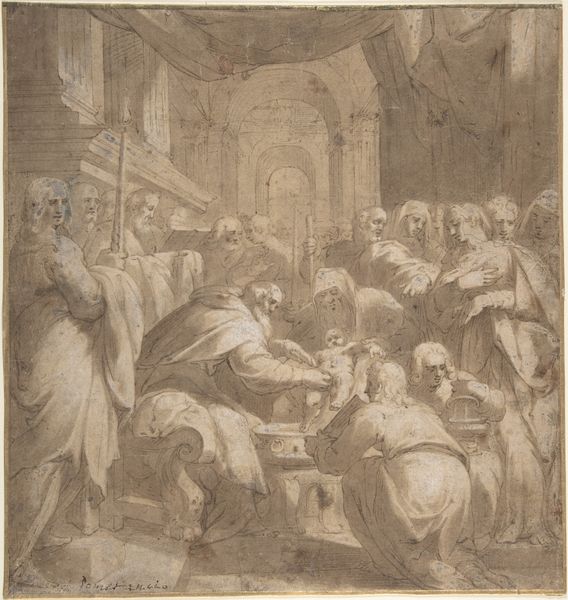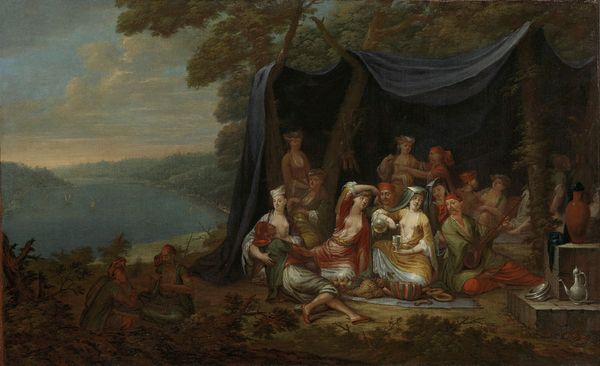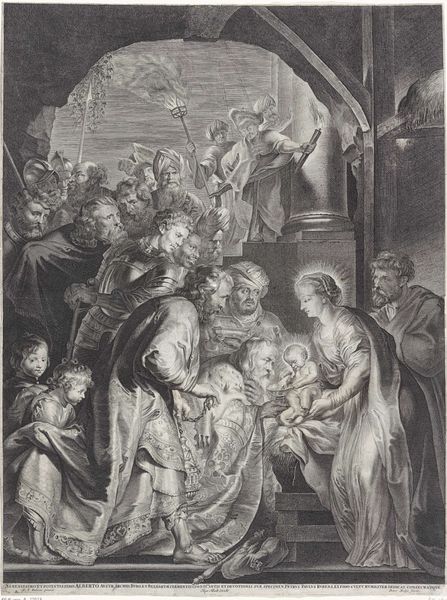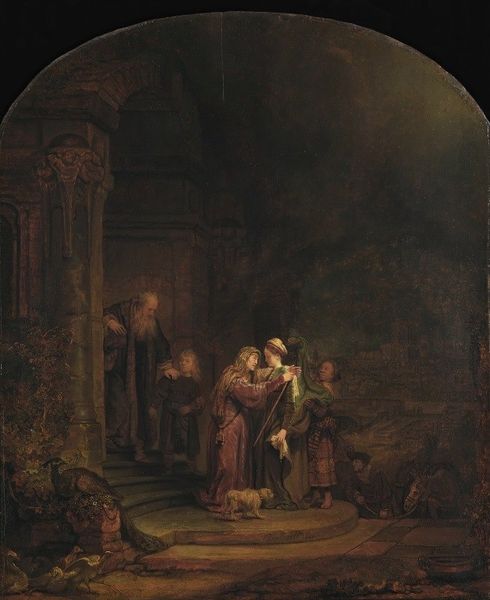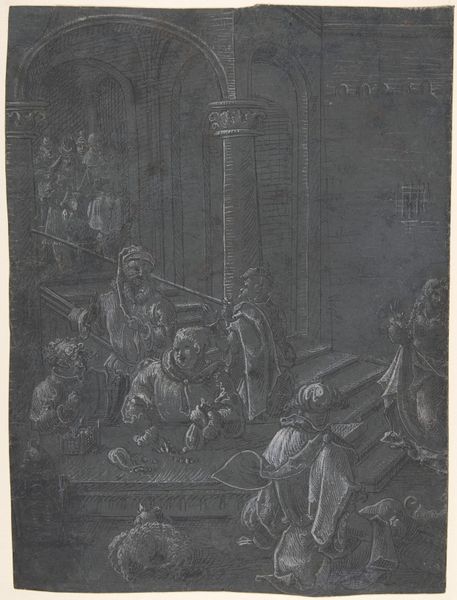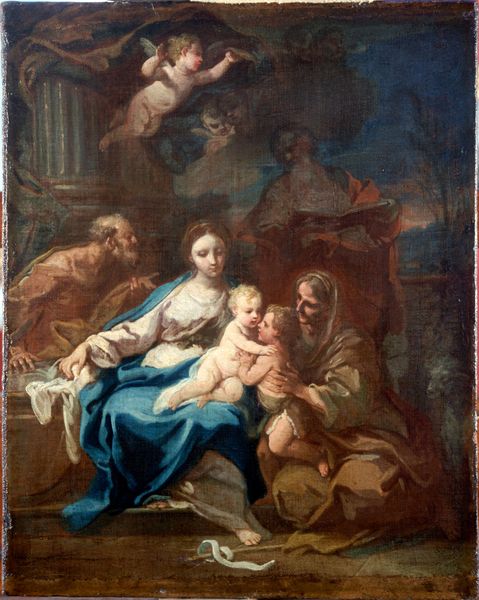
oil-paint
#
baroque
#
oil-paint
#
figuration
#
oil painting
#
history-painting
#
realism
Dimensions: height 55 cm, width 45 cm, depth 4.6 cm
Copyright: Rijks Museum: Open Domain
Curator: Looking at Jacob de Wet's "Christ Blessing the little Children", dated sometime between 1640 and 1672, what immediately strikes you? Editor: It feels overwhelmingly...shadowy. There's this distinct contrast, though: the figures clustered around Christ are lit, but the edges dissolve into a heavy darkness. It creates this sense of intimacy, like a hidden gathering. Curator: Indeed. Considering it’s an oil painting, the layering of pigment and glazes would have been meticulously planned. De Wet uses light not just to illuminate but to also emphasize the central theme of divine grace. Look at how the architecture surrounding them seems to almost crumble away to make the central scene shine even more. Editor: That contrast could be viewed as symbolic. Think about the role of children historically - often marginalized, dependent. Placing them in the light, literally, becomes a radical statement about their value and inclusion in a deeply hierarchical society. Curator: Absolutely. Moreover, thinking about the pigments he would have had available, there's the cost involved and sourcing the materials for this work, which underscores the investment into this representation of faith. Editor: Considering also that de Wet’s realism places the figures, presumably models in a setting like this would indicate the access to everyday people. What considerations must go into producing work that shows history with familiar people, or in this case biblical history with contemporary touches. How must that have influenced its audiences’ understanding? Curator: De Wet, given his history painting style, might have been directly appealing to his patron's social and spiritual sensibilities by portraying Biblical narratives. Editor: A narrative designed, perhaps, to solidify the powerful notion of Christian love across social strata but potentially also to maintain social order, presenting it through idealized images? Food for thought, really. Curator: It certainly presents an avenue for us to rethink these historic intersections of power and devotional craft in a completely different perspective, which might seem at first to represent simply just a heartwarming subject. Editor: Precisely. An interesting piece with many complex contextual threads.
Comments
No comments
Be the first to comment and join the conversation on the ultimate creative platform.
